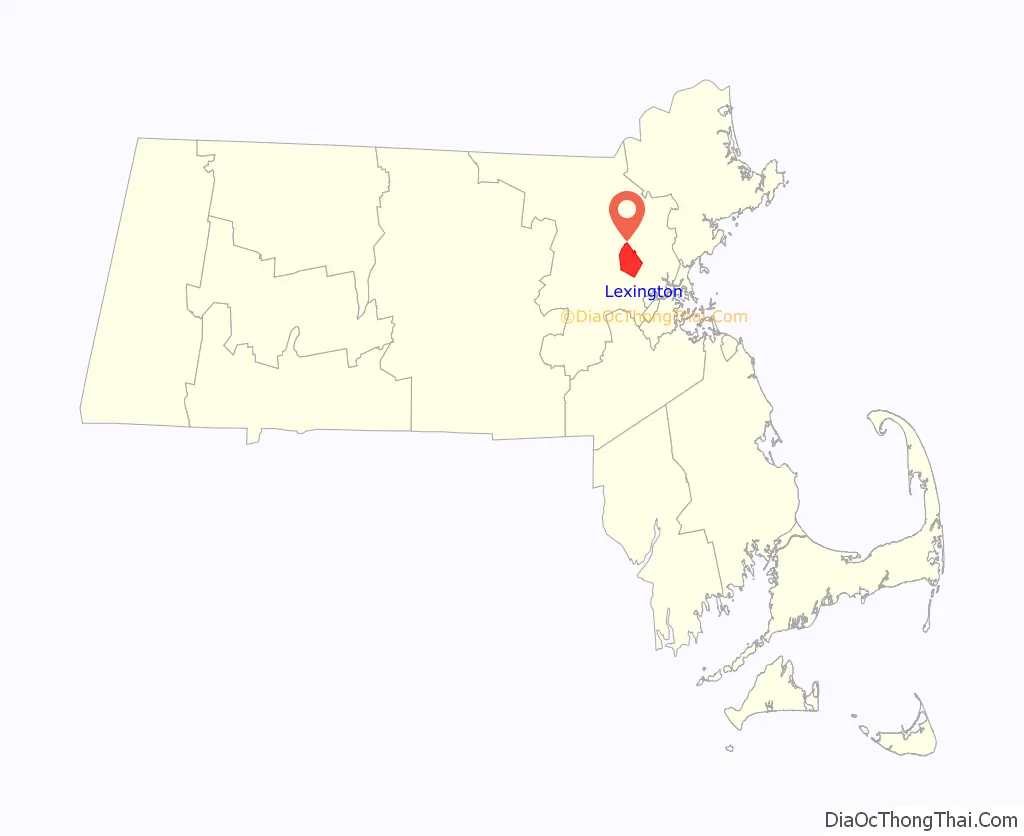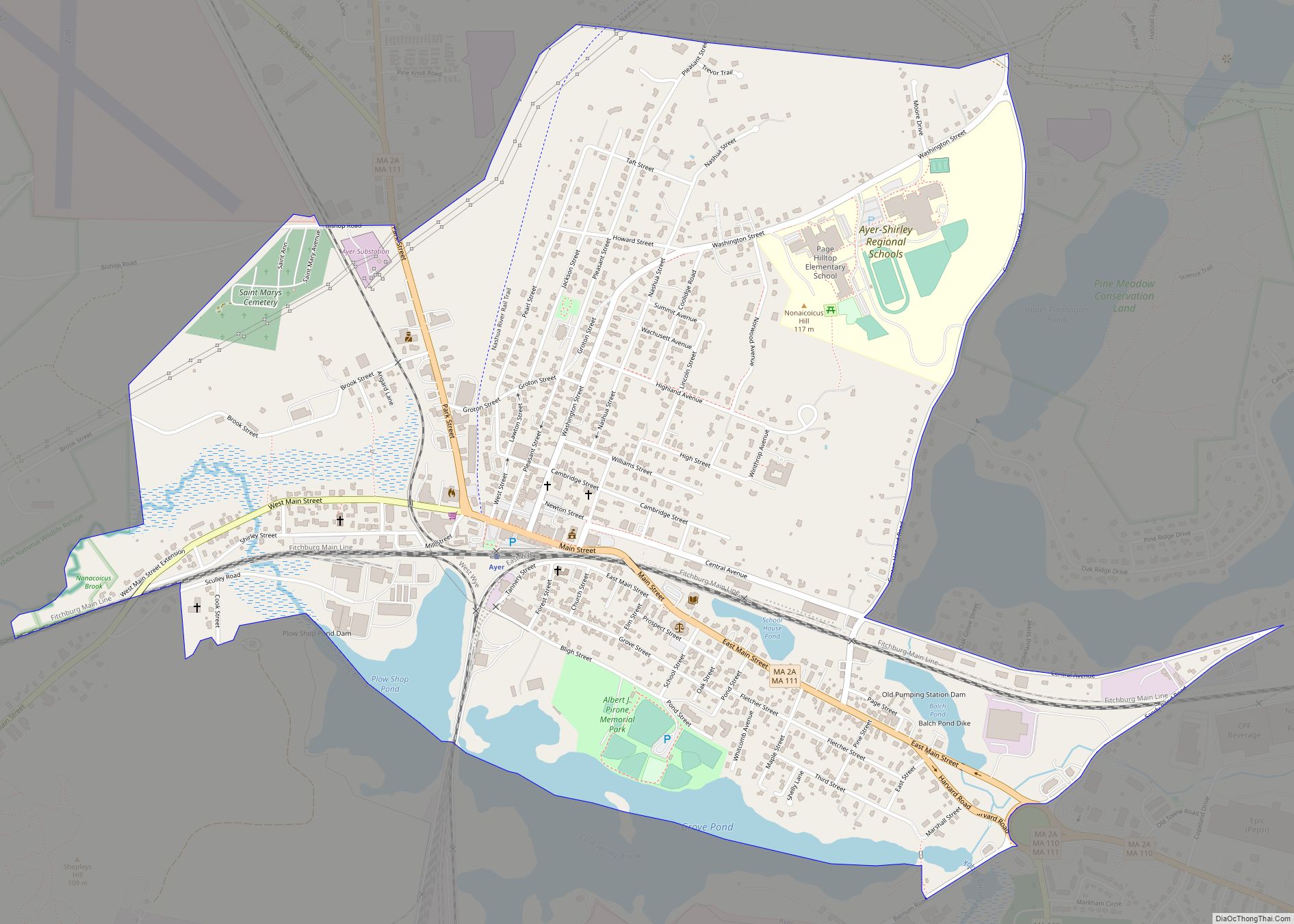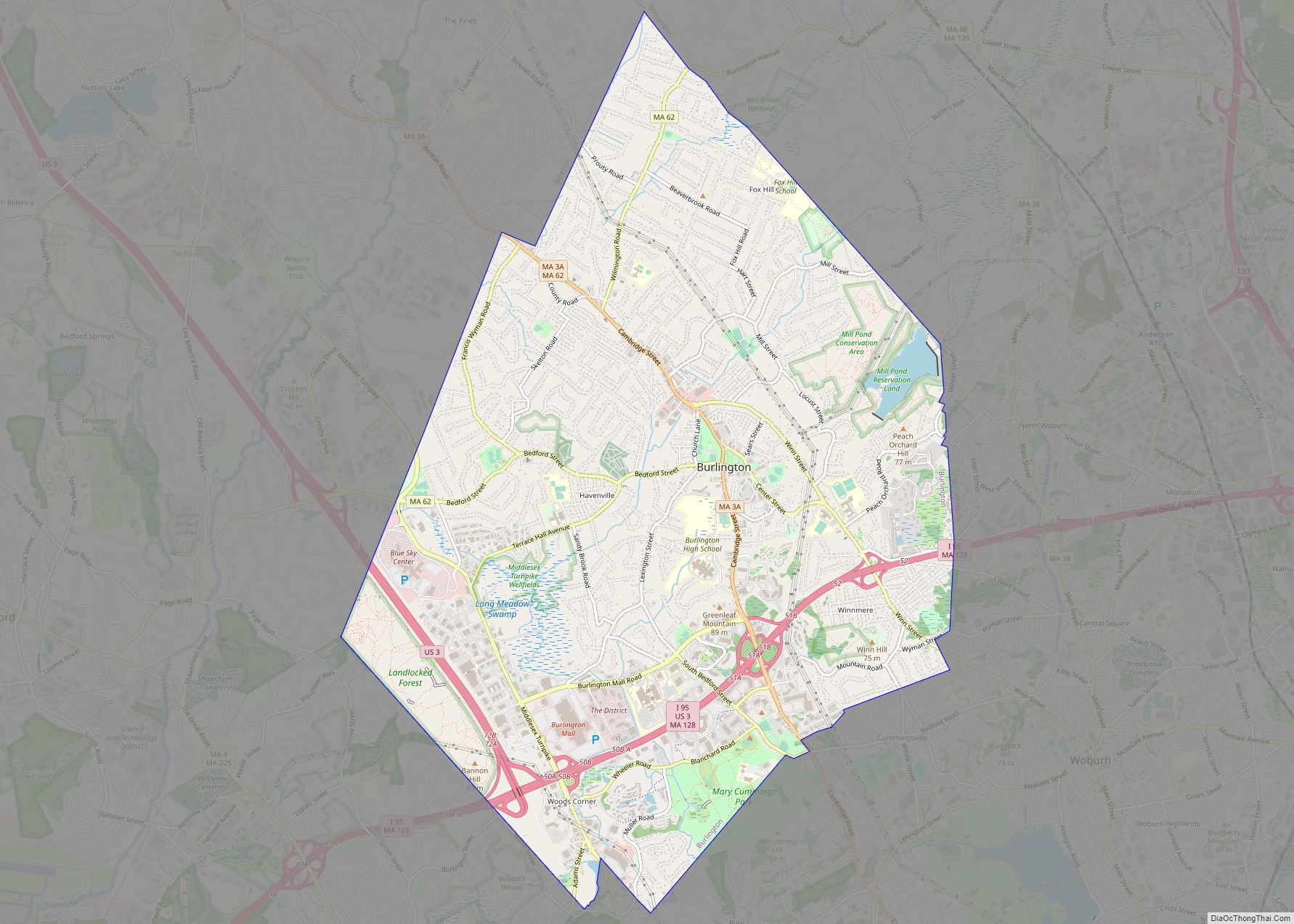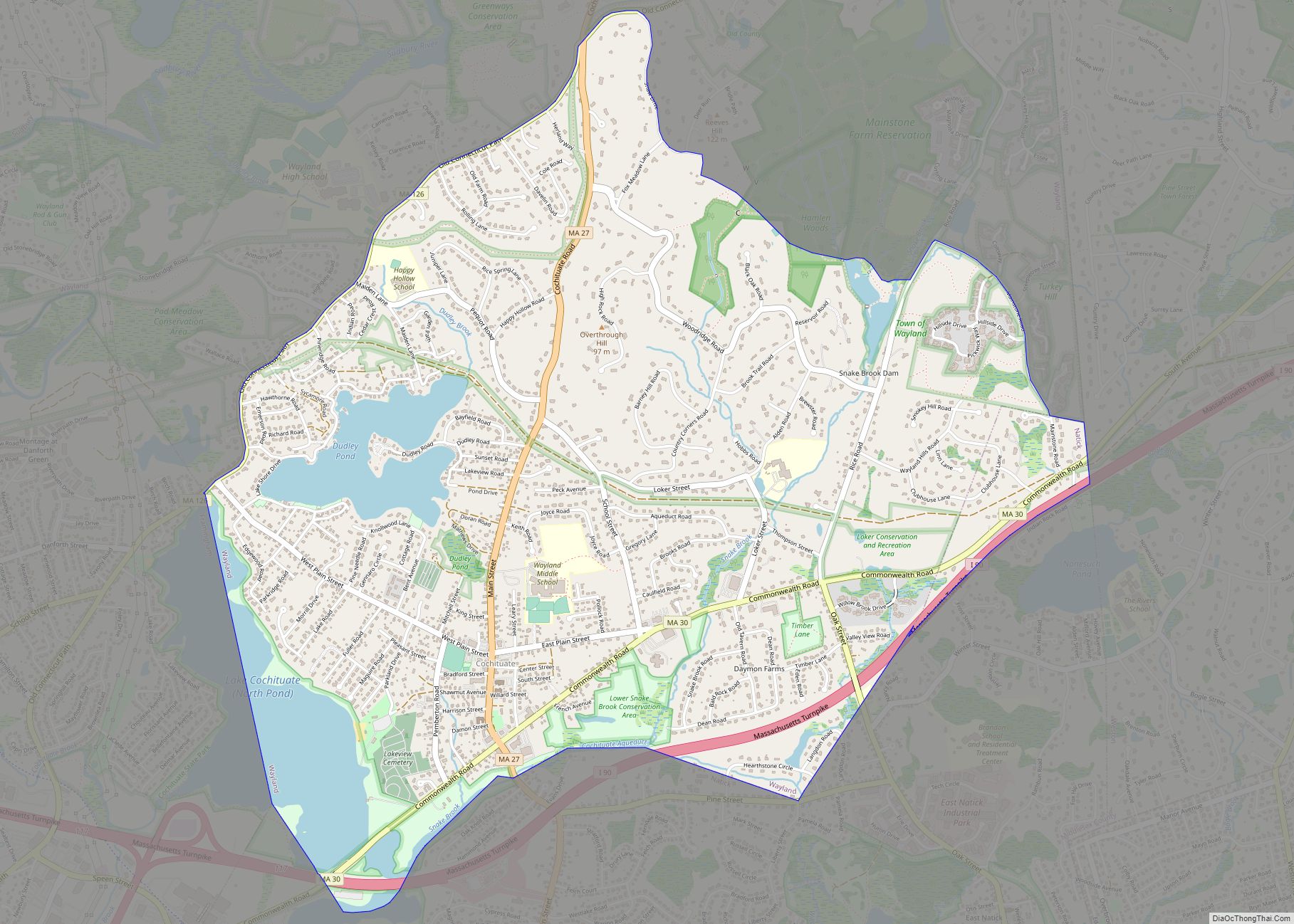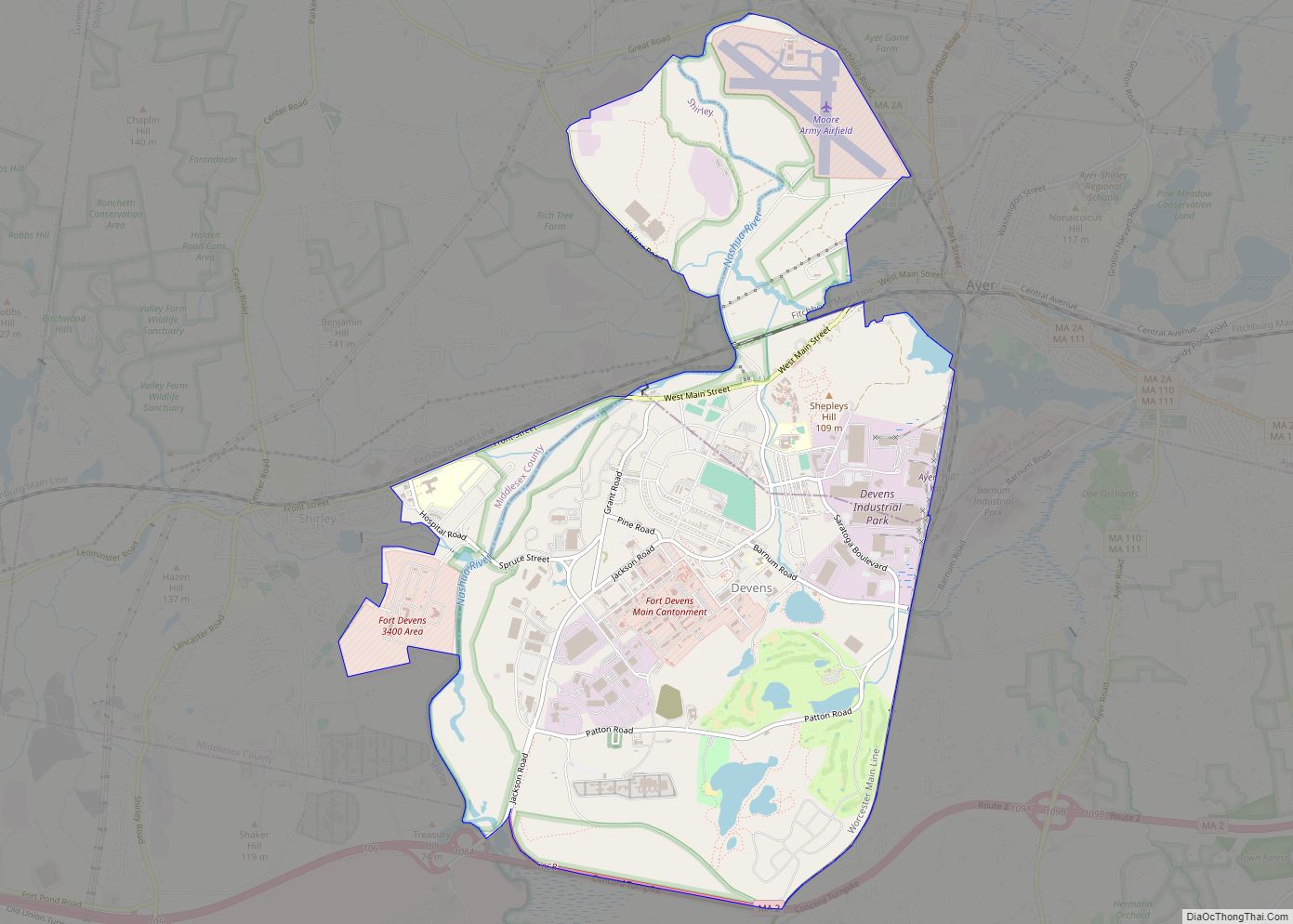Lexington is a suburban town in Middlesex County, Massachusetts, United States, located 10 miles (16 km) from Downtown Boston. The population was 34,454 as of the 2020 census. The area was originally inhabited by Native Americans, and was first settled by Europeans in 1641 as a farming community. Lexington is well known as the site of the first shots of the American Revolutionary War, in the Battle of Lexington on April 19, 1775, where the “Shot heard ’round the world” took place. It is home to Minute Man National Historical Park.
| Name: | Lexington CDP |
|---|---|
| LSAD Code: | 57 |
| LSAD Description: | CDP (suffix) |
| State: | Massachusetts |
| County: | Middlesex County |
| Incorporated: | 1713 |
| Elevation: | 210 ft (64 m) |
| Total Area: | 16.5 sq mi (42.8 km²) |
| Land Area: | 16.4 sq mi (42.5 km²) |
| Water Area: | 0.1 sq mi (0.4 km²) |
| Total Population: | 34,454 |
| Population Density: | 2,100/sq mi (810/km²) |
| Area code: | 339/781 |
| FIPS code: | 2535250 |
| GNISfeature ID: | 0619401 |
| Website: | www.lexingtonma.gov |
Online Interactive Map
Click on ![]() to view map in "full screen" mode.
to view map in "full screen" mode.
Lexington location map. Where is Lexington CDP?
History
Indigenous history
Native Americans inhabited the area that would become Lexington for thousands of years prior to European colonization of the Americas, as attested by a woodland era archaeological site near Loring Hill south of the town center. At the time of European contact, the area may have been a border region between Naumkeag or Pawtucket to the northeast, Massachusett to the south, and Nipmuc to the west, though the land was eventually purchased from the Naumkeag. The contact period introduced a number of European infectious diseases which would decimate native populations in virgin soil epidemics, leaving the area largely uncontested upon the arrival of large groups of English settlers in the Puritan Great Migration. In 1639, the Massachusetts General Court purchased the land that would become present day Lexington, then within the boundaries of Cambridge, from the Naumkeag Squaw Sachem of Mistick.
Colonial history
The area that is now Lexington was first settled circa 1642 as part of Cambridge, Massachusetts. As the population increased, Lexington was incorporated as a separate parish, called Cambridge Farms, in 1691. This allowed the residents to have their own local church and minister, although they were still under jurisdiction of the Town of Cambridge. Lexington was incorporated as a separate town in 1713. It was then that it got the name Lexington. How the town received its name is the subject of some controversy. One view is that it was named in honor of Lord Lexington, an English peer. Another view is that it was named after Lexington (which was pronounced and is today spelled Laxton) in Nottinghamshire, England.
In the early colonial days, Vine Brook, which runs through Lexington, Burlington, and Bedford, and then empties into the Shawsheen River, was a focal point of the farming and industry of the town. It provided for many types of mills, and in the 20th Century, for farm irrigation.
Battle of Lexington
On April 19, 1775, what many regard as the first battle of the American Revolutionary War, the Battle at Lexington, took place. On the night of April 18, the British Army sent out 800 grenadiers and light infantry soldiers on foot from Boston, with the intention of destroying Colonial gunpowder and cannons that were being stored in Concord, as well as capturing two leaders of the Sons of Liberty, John Hancock and Samuel Adams, who were staying in Lexington. Hancock and Adams were warned of the danger by two alarm riders, Paul Revere and William Dawes, who alerted the countryside of the British military movements with shouts of “the Redcoats are coming!” When the British soldiers arrived on the Lexington Common not long after sunrise, they faced 77 men of the Lexington militia, commanded by Captain John Parker. Someone — still unknown to this day — fired a shot, provoking an exchange of musket fire between the two sides. Eight Lexington militia men were killed, dozens more wounded. After the rout, the British marched on toward Concord. There, several hundred militia and minute men from nearby towns assembled near the Old North Bridge to turn back the British and prevent them from capturing and destroying the Colony’s stores of gunpowder and military equipment.
Today, the town annually commemorates the battle on the Battle Green in the Downtown with a reenactment, as part of its Patriots Day festivities.
Urbanization
For decades after the Revolutionary War, Lexington grew modestly while remaining largely a farming community, providing Boston with much of its produce. Many of these farms became dense housing developments and subdivisions by the 1970s. One notable housing development was the Peacock Farm residential neighborhood. It was designed by architect Walter Pierce and was built between 1952 and 1958. As of 2012, the neighborhood was on the National Register of Historic Places. Lexington always had a bustling downtown area, which remains to this day. Lexington began to prosper, helped by its proximity to Boston, and having a rail line (originally the Lexington and West Cambridge Railroad, later the Boston and Maine Railroad) service its citizens and businesses, beginning in 1846 until 1981. In 1984, Due to the rapid urbanization that occurred in many other suburbs like Lexington, The MBTA proposed expanding the Red Line through Lexington, terminating in Bedford. Despite Lexington and Bedford being on board with the idea, Arlington residents lobbied against the plan and it was shot down by the Board of Selectmen.
Lexington, as well as many of the towns along the Route 128 corridor, experienced a jump in population in the 1960s and 1970s, due to the high-tech boom. Today, many companies are still moving into Lexington, with Takeda and BAE Systems both having major operations within the city limits. The urbanization and massive job growth resulted in soaring property values, and the school system becoming nationally recognized for its excellence. The town participates in the METCO program, which buses minority students from Boston to suburban towns to receive better educational opportunities than those available to them in the Boston Public Schools.
Lexington was the Cold War location of the USAF “Experimental SAGE Subsector” for testing a prototype IBM computer that arrived in July 1955 for development of a computerized “national air defense network” (the namesake “Lexington Discrimination System” for incoming ICBM warheads was developed in the late 1960s).
Lexington Road Map
Lexington city Satellite Map
Geography
Lexington is located at 42°26′39″N 71°13′36″W / 42.44417°N 71.22667°W / 42.44417; -71.22667 (42.444345, −71.226928).
According to the United States Census Bureau, the town has a total area of 16.5 square miles (42.8 km), of which 16.4 square miles (42.5 km) is land and 0.1 square miles (0.4 km), or 0.85%, is water.
Lexington is bordered by Burlington, Woburn, Winchester, Arlington, Belmont, Waltham, Lincoln, and Bedford. It has more area than all other municipalities that it borders.
See also
Map of Massachusetts State and its subdivision: Map of other states:- Alabama
- Alaska
- Arizona
- Arkansas
- California
- Colorado
- Connecticut
- Delaware
- District of Columbia
- Florida
- Georgia
- Hawaii
- Idaho
- Illinois
- Indiana
- Iowa
- Kansas
- Kentucky
- Louisiana
- Maine
- Maryland
- Massachusetts
- Michigan
- Minnesota
- Mississippi
- Missouri
- Montana
- Nebraska
- Nevada
- New Hampshire
- New Jersey
- New Mexico
- New York
- North Carolina
- North Dakota
- Ohio
- Oklahoma
- Oregon
- Pennsylvania
- Rhode Island
- South Carolina
- South Dakota
- Tennessee
- Texas
- Utah
- Vermont
- Virginia
- Washington
- West Virginia
- Wisconsin
- Wyoming

